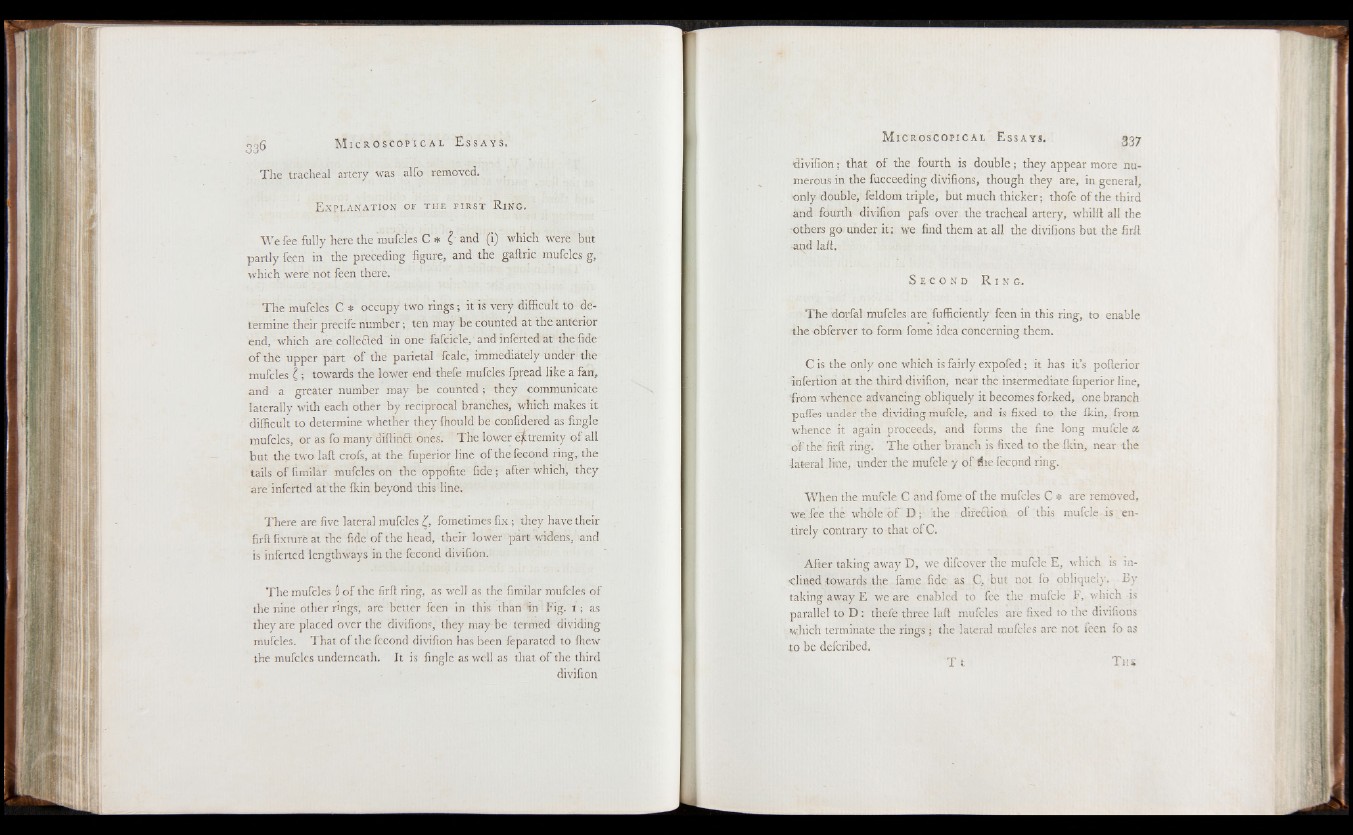
The tracheal artery was alfo removed.
Explanation of the f irst R ing.
We fee fully here the mufcies C * £ and (i) which were but
partly feen in the preceding figure, and the gaftric mufcies g,
which were not feen there.
The mufcies C * occupy two rings; it is very difficult to determine
their precife number; ten may be counted at the anterior
end, which are colle&ed in one fafcicle, • and inferted at the fide
o f the upper part o f the parietal fcale, immediately under the
mufcies l ; towards the lower end thefe mufcies fpread like a fan,
and a greater number may be counted; they communicate
laterally with each other by reciprocal branches, which makes it
difficult to determine whether they ffiould be confidered as Angle
mufcies, or as fo many diftinfl: ones. The lower extremity of all
but the two laft crofs, at the fuperior line o f the fecond ring, the
tails o f fimilar mufcies on the oppofite fide; after which, they
are inferted at the {kin beyond this line.
There are five lateral mufcies £, fometimes f ix ; they have their
firft fixture at the fide of the head, their lower part widens, and
is inferted lengthways in the fecond divifion.
The mufcies 0 of the full ring, as well as the fimilar mufcies o f
the nine other rings, are better feen in this than in Fig. 1 ; as
they are placed over the divifions, they may be termed dividing
mufcies. That o f the fecond divifion has been feparated to fhew
the mufcies underneath. It is fingle as well as that of the third
divifion
divifion;• that o f the fourth is double; they appear more numerous
in the fucceeding divifions, though they are, in general,
■ only double, feldom triple, but much thicker; thofe of the third
and fourth divifion pafs over the tracheal artery, whilft all the
•others go under it: we find them at all the divifions but the firft
■ and laft.
S e c o n d R i n g .
The dorfal mufcies are fufficiently feen in this ring, to enable
the obferver to form fome idea concerning them.
C is the only one which is fairly expofed; it has it’s pofterior
infertion at the third divifion, near the intermediate fiiperior line,
■ from whence advancing obliquely it becomes forked, one branch
paffes under the dividing mufcle, and is fixed to the {kin, from
whence it again proceeds, and forms the fine long mufcle a.
o f the firft ring. The other branch is fixed to the {kin, near the
■ lateral line, under the mufcle y of tSie fecond ring.
When the mufcle C and fome of the mufcies C * are removed,
we fee the whole o f D ; the direftion o f this mufcle is entirely
contrary to that of C.
After taking away D, we difeover the mufcle E, which is inclined
towards the fame fide as C, but not fo obliquely. By
taking away E we are enabled to fee the mufcle F, which is
parallel to D : thefe three laft mufcies are fixed to the divifions
which terminate the rings ; the lateral mufcies are not feen fo as
to be deferibed.
T t Tiis